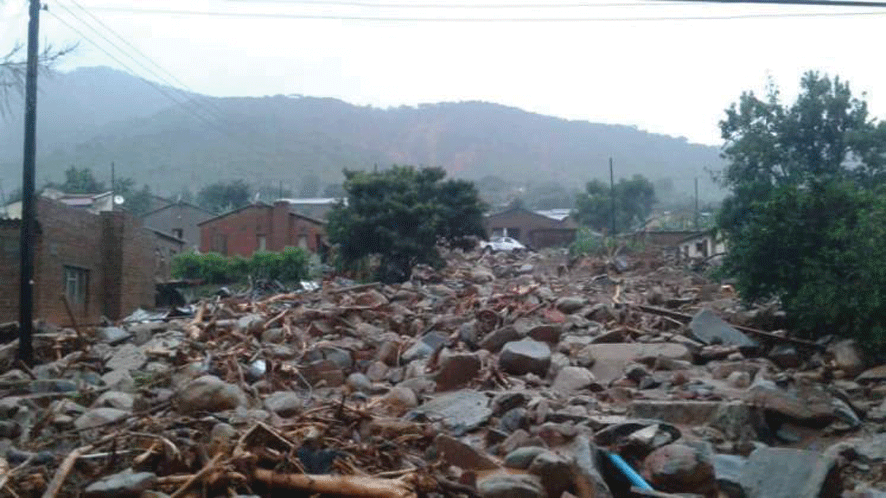
By Peter Makwanya
AROUND the world, vulnerable local communities, especially those that live in marginal environments, constitute a wide constituency of local communities. These are the vulnerable communities that are subject to the unpredictable nature of climate change impacts and risks. They are the poor and impoverished, but only poor due to lack of material resources, while very rich in local knowledge, resilience and expertise.
The vulnerable communities’ main undoing is that they are looked down upon, lack the required voice and are worlds apart from authorities and decisionmakers hence they are hardly consulted.
This constituency of the marginalised communities faces many challenges in relation to climate change impacts and shocks, in their attempts to adapt in their respective areas.
They are always on the receiving end of extreme weather and climatic events which lead to devastating floods and prolonged droughts. The impacts, hazards and risks also include eroded and degraded local landscapes, among others. Therefore, they need both coping and adaptation strategies.
These vulnerable communities have their own personal adaptation and resilience issues which are largely ignored due to their undesirable local status and conditions. Their climate justice rights are largely ignored, local academics and researchers shun them. They are viewed as hapless and helpless communities not capable of doing anything material and tangible, except receiving food aid and mentorship. They suffer from skewed perceptions from authorities yet their worldviews are firm and inspiring. When foreign researchers come and engage these vulnerable local communities, the authorities, academics, media and researchers normally cry foul. In short, these vulnerable local communities do not receive the attention and respect they deserve.
It is common knowledge that these communities around the world have their own forms of undocumented intellectual property rights (IPR), which form part of their treasured and fundamental knowledge banks. These are their own unique coping and adaptation techniques, strategies and knowledge systems which are specific to the climatic hazards and contexts in the areas they reside.
Local communities have strong interaction and relationship with the ecosystems and this strengthens their resilience and context-specific knowledge systems. In this fast changing climate and because of being continuously marginalised, ostracised and looked down upon, there is a danger that their resilience practices and knowledge systems are being directly affected by climate change.
- Chamisa under fire over US$120K donation
- Mavhunga puts DeMbare into Chibuku quarterfinals
- Pension funds bet on Cabora Bassa oilfields
- Councils defy govt fire tender directive
Keep Reading
As a result of continuous marginalisation, these communities have lost confidence in themselves, their voices and governance systems around them. This is happening despite these communities having working knowledge of indigenous innovative tools such as disaster monitoring and weather forecasting including participatory conservation planning and horizontal peer communication strategies. These are designed to fill large communication gaps between them and the authorities.
They use bottom-up approaches and horizontal networks for enabling them to have knowledge and information in order to improve their understanding of sustainable development issues and new knowledge economy as the poor and the disadvantaged in sufficiently empowering ways. These are areas of interventions that can support pro-poor empowerment by enabling the voiceless and the marginalised groups to communicate, share critical and strategic information as well as mobilise others. In this regard, local people share their experiences at the same level according to their needs, expectations and worldviews in order to achieve sustainable development goals.
It is also significant in this regard, that universities and research bodies, reach out to the local communities, engage and consult them on critical issues of traditional environmental governance, diversity and resilience building. By so doing, the local communities become part of the solution to the climate challenges they encounter everyday. This is also important in coming up with local tolerant crop varieties and seed banks towards their own crop production models. These would be used to develope their own cropping calendars which can deal with climatic uncertainties and shocks.
These local communities can be introduced to the livelihood diversification options like fish ponds and beekeeping in their farming activities for better nutrition and generation of household incomes. These local communities have knowledge focusing on mapping and zoning of their landscapes and delineating territories as part of their local adaptation strategies.
They also have their own local learning for resilience purposes and at the same time preserving their grazing landscapes as community conservation areas.
This means that indigenous local communities at grass root level are dealing with climate change in sustainable and empowering ways, using their own local and traditional knowledge to drive their adaptation, coping with climate change hazards and impacts.
These local communities, despite experiencing huge communication gaps from responsible authorities, they have their own effective ways of traditional channels and pathways of communication like storytelling, singing, drumbeating, rainmaking ceremonies and dances, among others. These traditional ecological pathways and milestones need to be integrated into emerging new technologies and move with changing times.
Efforts should also be made to transform these local level initiatives so that they can attract and appeal to the local youths rather than waiting for the youths to rely on generational absorption. In this regard, it is important to include marginalised youths and other disadvantaged community members so that they are included in the cross-cutting digital divide. In this divide their voices are amplified through user-friendly digital communication tools that are interactive and engaging.
Digital technologies are fused with communication because communication is central and it is used to level matters, making things clear and creating meaning. Combined, digital technologies and communication are informed ways used to challenge negative power, making voices of the marginalised heard and influence policy. Above all digital communication is used for mobilising, awareness raising and generating knowledge as well as building partnerships.
- Peter Makwanya is a climate change communicator. He writes in his personal capacity and can be contacted on: [email protected]











